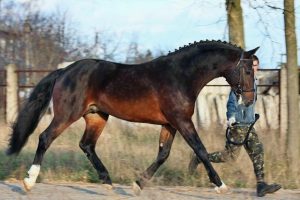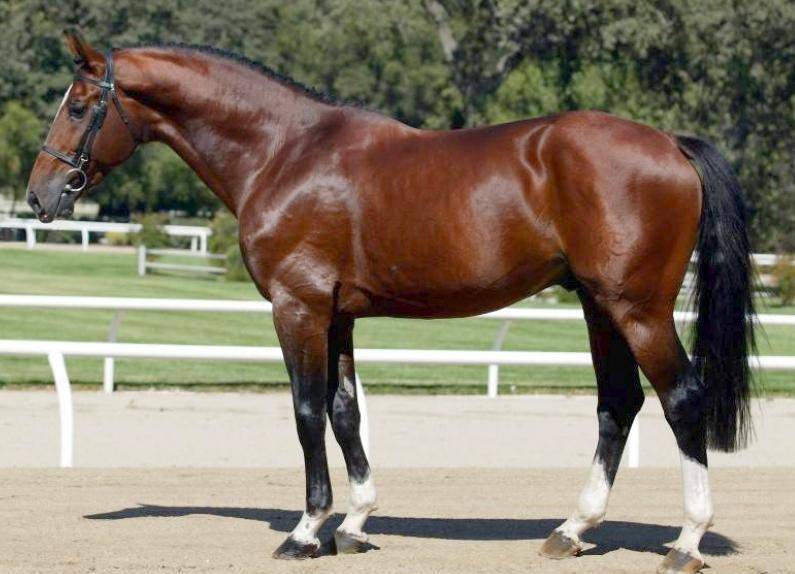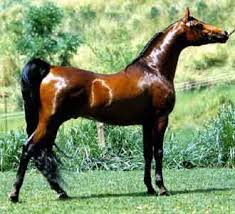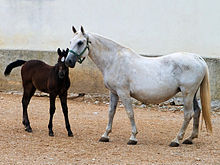Features of the most popular sports breed Hanover (part 1)
 The appearance of Hanoverian horses combines beauty and strength. An important role in the appearance of this breed was played by the English king George II, who was simultaneously the Elector of Hanover. Back in 1735, he founded the state stud farm in Sella. The goal was to breed universal and inexpensive animals.
The appearance of Hanoverian horses combines beauty and strength. An important role in the appearance of this breed was played by the English king George II, who was simultaneously the Elector of Hanover. Back in 1735, he founded the state stud farm in Sella. The goal was to breed universal and inexpensive animals.
Prior to this, in Hanover there was a princely stable, where albino horses were taken out. According to sources, horses were bred specifically for princely carriages. However, these animals were of little use for the needs of the people and the army. Having a capricious disposition and being easily soiled, two hundred years later the white princely albinos disappeared, leaving only the image of a horse on the coat of arms of the city. Hannover breed horse while walking
In Lower Saxony, captured Spanish and Eastern horses were also imported. Having come to power, George II often sent quality stallions to Hanover. At the stud farm, peasant mares became the basis for breeding a new breed. They were crossed with the best Holstein, Prussian and Andalusian stallions.
After the war with Napoleon fast English horses came into fashion. The first hippodrome was built in Sella, and crossbreeding between local animals and purebred English began. In the Hanoverian breed of horses, two directions stood out: massive individuals for the needs of the population and noble ones for competitions and nobles.
Around 1870, a pedigree breed book was launched. Breeders began to reinforce the best qualities of horses. After the First World War, the Hanoverian Tribal Union was created, working with the German Sports Union. At the same time, large harness horses began to be ennobled for riding. Horses of the Hanover breed in the pasture
In the middle of the last century, the fast mechanization of the world began and the Hanoverian breed from universal became an elite horse. From now on, horses were used only in equestrian competitions. Since 1960, Holstein and Trakenen blood were massively infused to the Hanoverians in order to improve athletic performance. Careful selection of individuals and evaluation of external data were also used. And the Hanoverians were used to breed the Danish warm-blooded.
Breed in Russia
Domestic horse breeders did not pass by a wonderful German breed. In the mid-60s, 4 stallions were brought to the Kaliningrad stud farm. They were quite bony and massive. For three decades at this plant, the development of the breed took place without the infusion of fresh blood. Kon of the Hanover breed in competitions
Only at the end of the century began the massive import of Holstein and Traken, and the improvement of the Hanoverians. Dressage and show jumping have gained great popularity in Russia, respectively, and popularity has increased.
Currently, the Hannover breed of horses in Russia is bred by the Kaliningrad stud farm, and several other enterprises in the Moscow, Kirov, Tver, Novgorod regions and small private farms.
Breeding work takes place in the same areas and rules as in the homeland of horses. Note that starting from the 18th century, all individuals of the Hanover breed receive a special brand belonging to the stud farm in Sella. This is an inverted beech “H” and a three-digit number. The studentbook annually registers about 10,000 foals.




